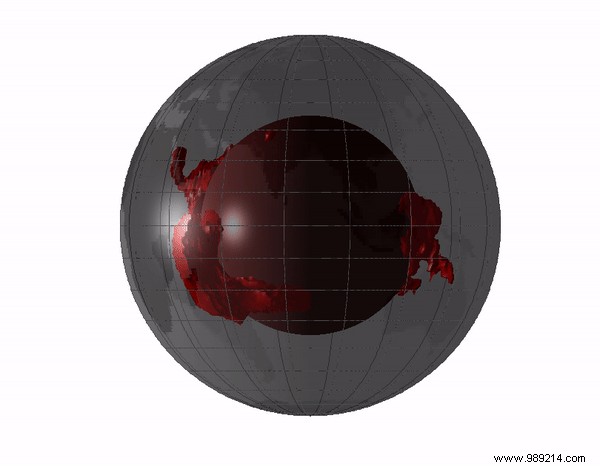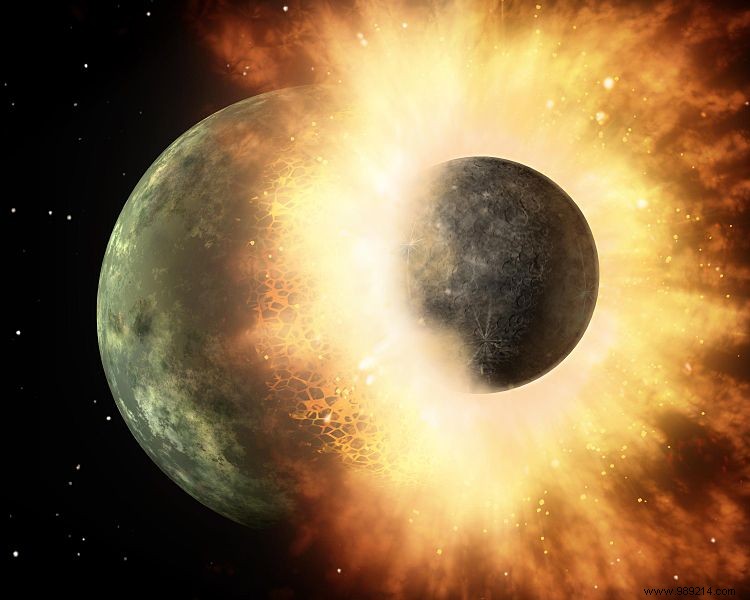Large Low Shear Velocity Provinces (LLSVP) are among the largest and strangest of all isolated structures on Earth. Where do they come from? According to new simulations, it could be the remains of Theia, this protoplanet to which we owe the Moon.
Two huge "drops" of dense rock lurk deep in the lowest parts of the Earth's mantle. These two gigantic masses are the large low shear velocity provinces (LLSVP) . As their name suggests, both of these structures are characterized by slow shear wave velocities. These are a type of elastic waves capable of traveling through the body of an object.
One of these provinces is buried under Africa, the other under the Pacific. Each extends laterally for thousands of kilometers and for several hundred kilometers vertically from the core-mantle boundary. These anomalies are so massive that they in turn generate their own disturbances.
But where did these two huge structures come from? Many believe that the LLSVPs might just be accumulations of subducted ocean slabs ('slab graveyards', as it were). However, not everyone agrees. Some think that they could be much older... and of extraterrestrial origin.

According to the prevailing theory, our young Earth collided with a Mars-sized object named Theia about 4.5 billion years ago. This impact would have caused an ejection of matter which, under the effect of gravity, would have agglomerated to then form the Moon.
So what happened to Theia? Was it destroyed on impact? Did it simply ricochet to finally continue on its way? We don't know yet.
On the other hand, some researchers believe that pieces of this ancient protoplanet are still buried under our feet. And according to new modeling by researchers at Arizona State University (ASU), LLSVPs may represent these ancient fragments.

“The Impact Hypothesis giant is one of the most scrutinized models for the formation of the Moon, but direct evidence pointing to the existence of the Theia impactor remains elusive s,” says lead author Qian Yuan.
“Here we demonstrate that Theia's mantle can be inherently several percent denser than Earth's mantle. In fact, these materials may have sunk into the Earth's lowest mantle before accumulating in thermochemical piles that could cause the seismically observed LLSVPs “.
This is currently only a hypothesis supported by simulations. It remains to be seen how the scientific community will react to these new proposals. The results of this work are currently under review, ahead of future publication in the Geophysical Research Letters .